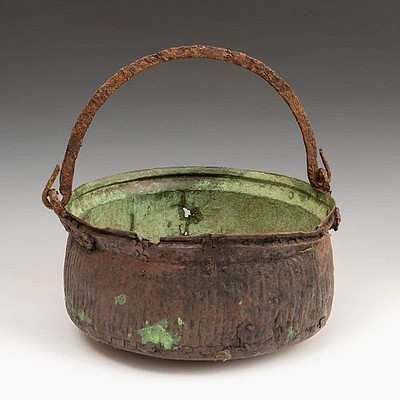Crater of columns attributed to the Florentine painter. Attica Greece, ca. 460-450 B.C. Ceramics. Provenance: Private collection, London. Acquired on
Lot 64
About Seller
Setdart Auction House
Carrer Aragó 346
Barcelona
Spain
Setdart Subastas was born in 2004 and is currently the first online art auction in Spain with solidity, prestige and reliability guaranteed by our more than 60,000 users. Setdart has a young, dynamic and enterprising team ready to successfully manage the purchase and sale of art works through custom...Read more
Categories
Estimate:
EUR€20,000 - EUR€25,000
$21,505.38 - $26,881.72
Absentee vs Live bid
Two ways to bid:
- Leave a max absentee bid and the platform will bid on your behalf up to your maximum bid during the live auction.
- Bid live during the auction and your bids will be submitted real-time to the auctioneer.
Bid Increments
| Price | Bid Increment |
|---|---|
| EUR€0 | EUR€10 |
| EUR€200 | EUR€25 |
| EUR€500 | EUR€50 |
| EUR€1,000 | EUR€100 |
| EUR€3,000 | EUR€200 |
| EUR€5,000 | EUR€500 |
| EUR€10,000 | EUR€1,000 |
| EUR€20,000 | EUR€2,000 |
| EUR€50,000 | EUR€5,000 |
About Auction
By Setdart Auction House
Dec 22, 2021
Set Reminder
2021-12-22 08:30:00
2021-12-22 08:30:00
America/New_York
Bidsquare
Bidsquare : Archaeology, Session I
https://www.bidsquare.com/auctions/setdart-auction-house/archaeology-session-i-8050
Setdart Auction House sofia@setdart.com
Setdart Auction House sofia@setdart.com
- Lot Description
Crater of columns attributed to the Florentine painter. Attica Greece, ca. 460-450 B.C. Ceramics. Provenance: Private collection, London. Acquired on the art market in Europe during the 1980s -1990s. Attached thermoluminescence test. Recomposed from all the original fragments. Measures: 38 cm (height) x 35 cm (diameter). Column crater from Attica, attributed to the Painter of Florence (c.465-440 BC) and decorated with the technique of red figures. The obverse, with a scene starring the god Dionysus on a mule and two satyrs, stands out for its high degree of decorativism; the reverse, meanwhile, continues the aesthetics of the rest of the piece, presenting a scene of encounter with three characters (two men and a woman) arranged in a row, dressed in prominent togas and holding long sticks in their hands. The scenes are framed by double vertical dotted bands. As it used to happen in the decoration of column craters, the upper part is decorated with geometric motifs. Regarding the typology, the krater was a large capacity vessel, intended to contain a mixture of water and wine. It was carried to the place of the meal, deposited on the floor or on a platform. The cupbearer administered the drink with a spoon or pitcher, and then filled the cups of the guests. Within this typology there was the columned krater, very popular in Athens in the 5th century BC. The "Krater Korinthios" (as it was also known) denotes its possible Corinthian origin. Red-figure pottery was one of the most important figurative styles of Greek pottery. It was developed in Athens around 530 B.C., and was used until the 3rd century B.C. It replaced the previous predominant style of black-figured pottery within a few decades. The technical basis was the same in both cases, but in the red figures the coloring is inverted, the figures being highlighted on a dark background, as if they were illuminated by a theatrical light, following a more natural scheme. Painters working with black figures were forced to keep the motifs well separated from each other and to limit the complexity of the illustration. In contrast, the red-figure technique allowed greater freedom. Each figure was silhouetted against a black background, allowing painters to portray anatomical details with more accuracy and variety. Over time these decorations would become more complex, incorporating numerous details in both black and white, which enhanced the narrative and decorative sense of the representations. The technique consisted of painting the motifs on the piece while it was still wet, using a transparent varnish that, when fired, acquired an intense black hue. Therefore, the motifs were invisible before firing, which meant that the painters had to work entirely from memory, without being able to see their previous work. Once the piece was fired, the areas not covered by the glaze remained with the reddish tone of the clay, while the glazed, "painted" areas took on a dense, shiny black color.
- Shipping Info
-
In-house shipping available. Please inquire at admin@setdart.com.
-
- Buyer's Premium



 EUR
EUR CAD
CAD AUD
AUD GBP
GBP MXN
MXN HKD
HKD CNY
CNY MYR
MYR SEK
SEK SGD
SGD CHF
CHF THB
THB

















